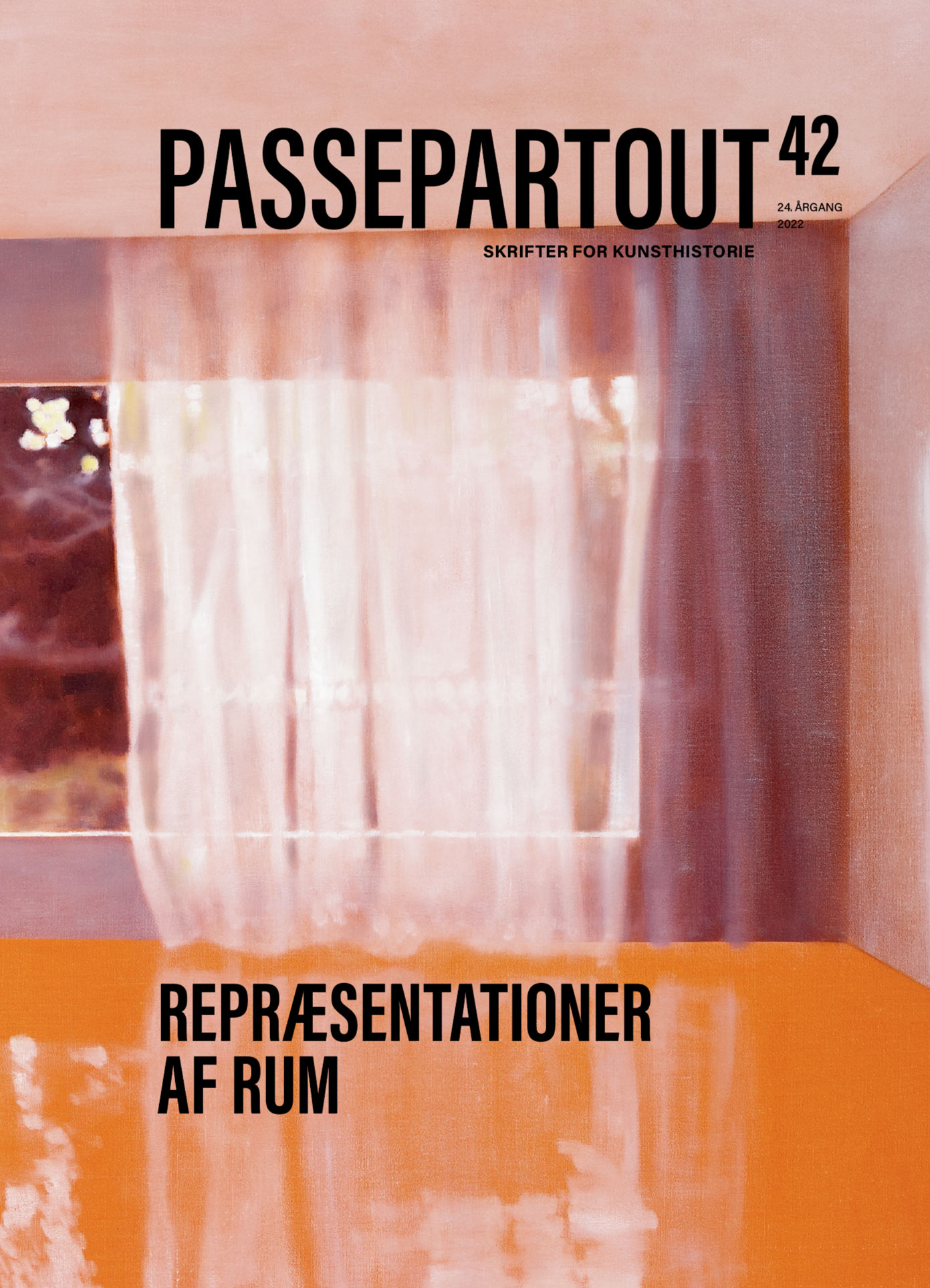Home/Screen
The Domestic Architecturalization of Television and Televised Space
Nøgleord:
television, domesticity, architectural space, electronic media, visual environment, streaming, binge-watchingResumé
As architecture becomes television, television becomes architecture. Televised spaces become extensions of residential spaces, creating windows into other realities. At the same time, spaces of these other realities are presented as flattened images. Using perspectives ranging from the social to the architectonic, this article argues that the television and the spaces it depicts are vital parts of our domestic architecture. Television has adopted spatial aspects and profoundly transformed domestic environments. The way in which we interact with television, and the type of content it depicts, greatly impacts the architectural implications of its presence. This article also examines changing methods of television consumption in the context of this relationship.
The televised image and television itself are both aspects of domestic architecture, and they shape our ideas of domesticity. Regarding them as important elements of domestic architecture would benefit architectural discourse and help to contextualize the effects they have had on the design of homes, as well as the idea of “home.”
Referencer
Alexander, Christopher, Sara Ishikawa, and Murray Silverstein, with Max Jacobson, Ingrid Fiksdahl-King, and Shlomo Angel: A Pattern Language: Towns • Buildings • Construction, New York, 1977.
BARB: “The Viewing Report,” 2019, https://www.barb.co.uk/download/?file=/wp-content/uploads/2019/05/Barb-Viewing-Report-2019_32pp_FINAL-1.pdf (accessed June 6, 2021).
Bucher, Taina, and Anne Helmond: “The Affordances of Social Media Platforms” in Burgess, Marwick and Poell (eds), The SAGE Handbook of Social Media, Los Angeles, 2017, pp. 223–53.
Buonanno, Milly: L’Età della Televisione: Esperienze e Teorie, 2006, Radice, Jennifer (trans.): The Age of Television: Experiences and Theories, Bristol, 2008.
Gilbert, Anne: “Push, Pull, Rerun: Television Reruns and Streaming Media” in Television & New Media, 20(7), 2019, pp. 686–701.
Godlewski, Joseph: “The Tragicomic Televisual Ghetto: Popular Representations of Race and Space at Chicago’s Cabrini-Green” in Berkeley Planning Journal, 22(1), 2009, pp. 115–125.
Horton, Donald, and R. Richard Wohl: “Mass Communication and Para-Social Interaction” in Psychiatry, 19(3), 1956, pp. 215–229.
Johnson, Catherine: “The appisation of television: TV apps, discoverability and the software, device and platform ecologies of the internet era” in Critical Studies in Television: The International Journal of Television Studies, 15(2), 2020, pp. 165–182.
Koolhaas, Rem et al.: Elements of Architecture, Köln, 2018.
Lee, Claire Shinhea: “Making Home through Cord-cutting: The Case of Korean Transient Migrants’ Postcable Culture in the United States” in Television & New Media, 21(3), 2020, pp. 278–296.
Lotz, Amanda D.: Portals: A Treatise on Internet-Distributed Television, Ann Arbor, 2017, https://quod.lib.umich.edu/m/maize/mpub9699689.
Lüders, Marika: “Pushing Music: People’s Continued Will to Archive Versus Spotify’s Will to Make Them Explore” in European Journal of Cultural Studies, 28 July 2019, doi: 10.1177/1367549419862943.
Lüders, Marika, and Vilde Schanke Sundet: “Conceptualizing the Experiential Affordances of Watching Online TV” in Television & New Media, 19 April 2021, doi: 10.1177/15274764211010943.
Lull, James: Inside Family Viewing: Ethnographic Research on Television’s Audiences, London, 1990.
McCutchin, Mame: “Seat of Comedy” in Esopus, 15, 2010, pp. 99–104.
Meyrowitz, Joshua: No Sense of Place: The Impact of Electronic Media on Social Behavior, New York, 1985.
Nagy, Peter, and Gina Neff: “Imagined Affordance: Reconstructing a Keyword for Communication Theory” in Social Media+ Society, 30 September 2015, doi: 10.1177/2056305115603385.
Nielsen: “Over 92 % of All Adult Viewing in the U.S. is Done on the TV Screen,” 2017, https://www.nielsen.com/us/en/insights/article/2017/over-92-percent-of-all-adult-viewing-in-the-us-is-done-on-the-tv-screen/ (accessed June 6, 2021).
Scott Brown, Denise: “Learning from Pop” in Venturi and Scott Brown, Arnell, Bickford, and Bergart (eds), A View from the Campidoglio: Selected Essays 1953–1984, New York, 1984, pp. 26–33.
Silverstone, Roger: Television and Everyday Life, London, 1994.
Turner, Graeme: “Television Studies, We Need to Talk about ‘Binge-Viewing’ ” in Television & New Media, 22(3), 2021, pp. 228–240.
Virilio, Paul: “The Third Window” in Schneider and Wallis (eds), Global Television, New York: 1988, pp. 185–197.
Wolff, Michael: Television is the New Television: The Unexpected Triumph of Old Media in the Digital Age, New York, 2015.





